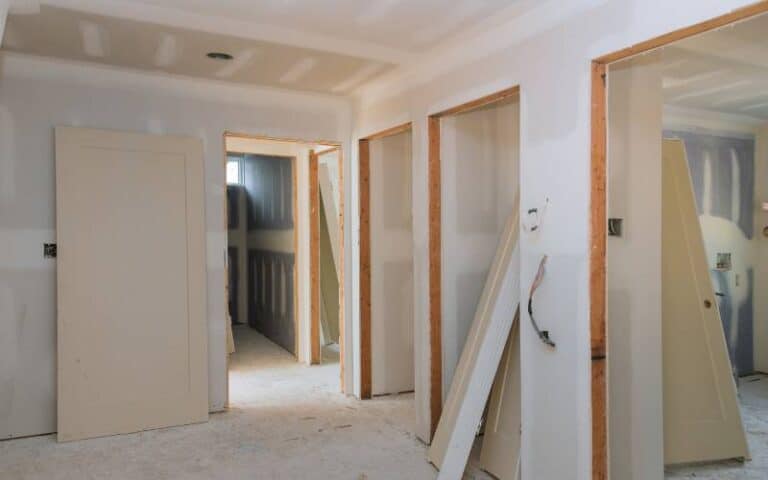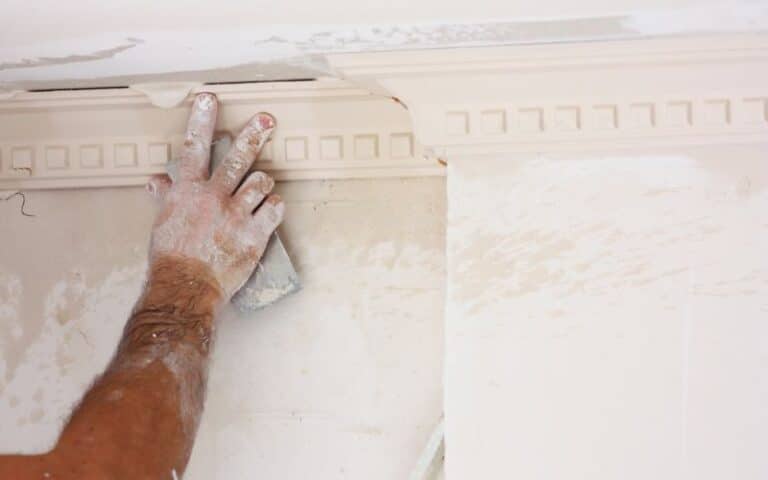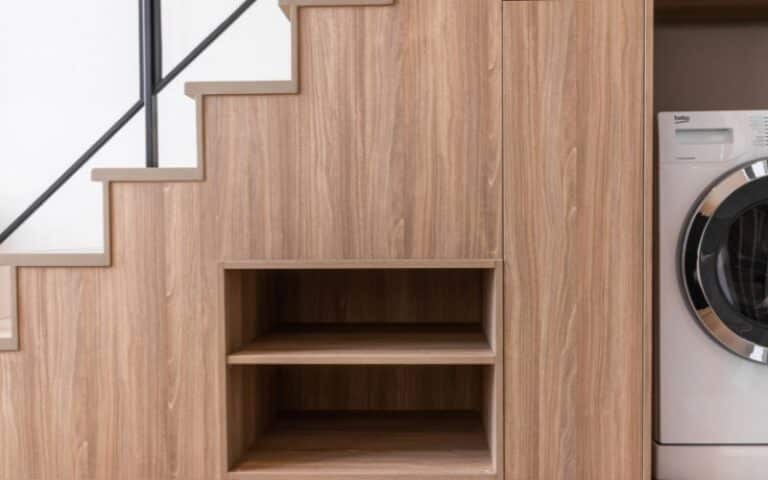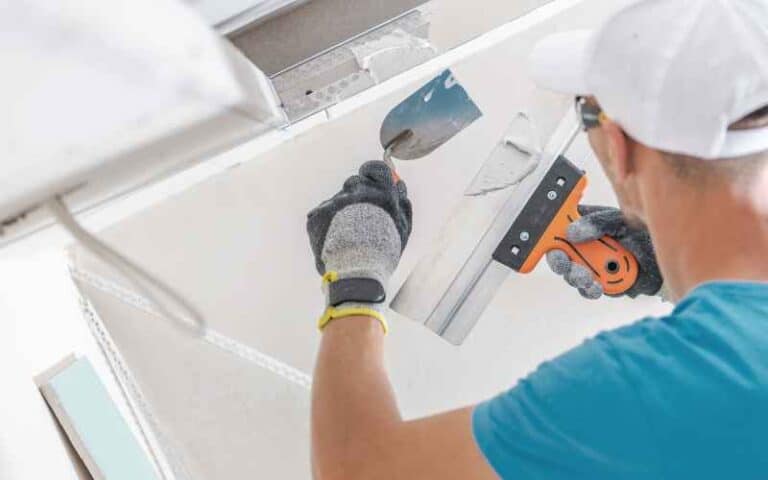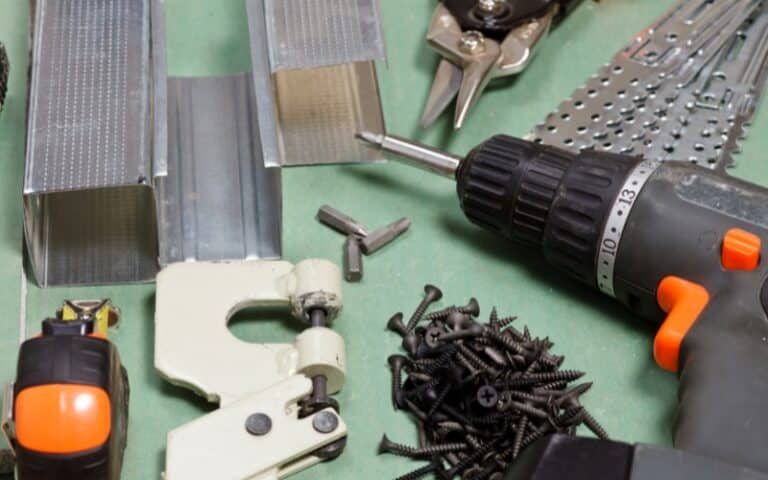Lath and plaster walls were once a common construction technique. While the method is considered outdated, most homes still utilize lath on walls and ceilings.
However, lath becomes unattractive when rusty or damaged and requires repairs or updating.
So you may be wondering if installing drywall over lath is possible.
Yes, you can install drywall over lath and plaster walls. Depending on the condition of your lath and plaster walls and the extent of the damage, you can install drywall without removing the existing material. However, if your lath and plaster are too damaged or worn out, you may need to remove them before installing drywall.
In this article, I will walk you through a step-by-step guide for installing drywall over lath and plaster.
By the end, you will understand the composition and differences between lath and drywall and the best option for your interior wall applications.
Ready for a Drywall Quiz?
Can You Put Drywall Over Lath?

Yes, you can put drywall over lath and plaster. Putting drywall over lath is a great way to modernize your old walls without removing the existing structure.
However, before you venture into the project, you must arm yourself with the right supplies, quality materials, and a plan for each process step.
You can only have a successful project when you follow the proper installation steps and use quality tools.
If you consider putting drywall over your lath, try the tips below.
#1. Use Self-Tapping Screws
Self-tapping screws attach the drywall to the lath strips, which are then secured to the ceiling joists. Ensure that the screws go in deep enough (about 1/4 inch) so that they will stay in place.
#2. Cut Around Electrical Outlets
Ensure to cut around any electrical outlets or fixtures.
You can use a keyhole saw for the job and ensure you do all the cutting before installing the drywall.
Doing so gives you room to screw the drywall over the areas without damaging them.
#3. Check for Nails
A forgotten nail sticking out of an old lath strip could puncture or damage your new drywall.
As such, It’s essential to search for any nails sticking out before you install your new drywall, as they can be dangerous if they come loose while drilling.
#4. Use Mesh Tape
To avoid cracking or buckling of the drywall, use mesh tape around all of your seams before applying the joint compound.
Remember to tape any corners where two pieces meet as well.
It will help create a strong bond and prevent any cracking down the line.
How Do I Install Drywall Over the Lath?
Installing drywall over lath and plaster is a project anyone can do with the right tools, safety equipment, and know-how.
However, it would help to know that when doing it yourself, it can be a time-consuming and tedious process.
Here are some materials you will need in installing drywall over the lath.
- Drywall boards and screws.
- Joint compound.
- Drywall tape.
- Utility knife or saw and a putty knife.
- Wallboard knife or taping knife.
- A T-Square.
- Drill and a screw gun.
- Sanding block and sandpaper.
Steps to Install Drywall Over Lath
Step One
The first step in installing drywall over lath and plaster is to prepare the walls.
Remove all loose, flaking material from the surface and brush off all dust.
You can clear the wall using a broom, vacuum, or air compressor.
Step Two
Once your wall is clean and ready, you must nail the drywall.
Start by attaching the drywall at the top of a wall, then work your way down.
To do this, you’ll want to use drywall screws or nails rated for 1/2 thick drywall.
Ensure the screws are firmly driven into the lath and plaster, as they will ensure a secure connection between them and the new drywall board.
It is best to understand that this is an important step. If you don’t secure the boards, they will quickly become loose.
Step Three
Once you attach your new drywall boards, you can finish by applying joint compound and mudding corners with mesh tape.
Consider using paper tape for extra reinforcement in areas like corners that entertain a lot of movement or stress on the board, such as near doorways or windows.
Step Four
Once you secure the drywall, if you finish with a smooth wall, use a putty knife to fill in any gaps or crevices in each joint.
Then use some lightweight joint compound and a putty knife to cover all other seams and joints.
Step Five
After you finish the fourth step, allow the compound to dry overnight before repeating the process for a second layer.
Please wait for the second layer of the compound to dry again before sanding it down with a sanding block.
Add compound to seams and joints after you hang the sheets for textured drywall, and then create your desired texture when it’s dry.
You can apply texture with tools like trowels, spray guns, or rollers. Whichever tools you decide on, ensure you achieve your desired consistency and thickness.
It would help to apply 2-3 coats of primer to textured walls before painting them.
It will ensure better paint coverage and prevent any possible staining due to oil or grease from wall treatments used in creating the texture.
Can You Screw Drywall to Lath?
Yes, you can screw drywall to the lath. However, it would help to know that the surface is prone to cracking because of its delicate nature.
So first, you must reinforce the lath and plaster walls by adding plywood or oriented strand board (OSB) over the lath.
With the additional support, you will be sure that your drywall will stay securely in place.
Once you put the plywood or OSB in place, you can use screws that are long enough to penetrate both the lath and the framing material behind it.
To be safe, use 2-3/8-inch long drywall screws. That way, you can be sure they’ll make it through to the framing material on the other side.
It would help to use at least one screw every 12 inches in each stud cavity.
Before installing drywall directly to the lath and plaster walls, fill any cracks or chips with joint compound or spackle to guarantee an even surface.
After patching, sand down the areas until they’re smooth.
Then, you can use construction adhesive and screws to install thick drywall sheets on top of your patchwork and plywood or OSB reinforcement layer.
If done correctly, the process will create a secure anchor for your construction project and add strength and stability that wasn’t there before.
Are Lath and Plaster Stronger Than Drywall?
You may be wondering whether lath and plaster are stronger than drywall. After all, lath and plaster walls have been around much longer, so they must have something going for them.
Both lath and drywall make a solid, long-lasting wall covering, but all other factors being equal, a lath and plaster wall is more potent than drywall.
However, drywall can also make drywall much thicker than lath and plaster and can be more assertive in some cases.
The strength of a drywall or a lath and plaster wall depends on several things.
For instance, the thickness of the material will go a long way in improving the wall’s strength.
Also, the type of materials used in construction and any additional reinforcement (such as steel studs) present will add to the strength of the walls.
In general, lath and plaster are stronger than drywall. However, the thicker the material, the stronger the wall will be.
So if you opt for a drywall interior and desire a strong wall, installing thicker drywall is your best bet.
However, it would be best to remember that installing it will cost more.
While lath and drywall make for a sound wall covering, several factors make each unique depending on what you are looking for.
And the table below contains some differences between lath, plaster, and drywall.
| Lath and Plaster | Drywall |
|---|---|
| More labor-intensive to install. | A drywall is easier to install. |
| More capital-intensive to install. | Drywall is cheaper to install. |
| High-end plaster walls are more durable and strong. | You can readily cut holes in drywall to make in-wall repairs. |
| Lath and plaster have more energy efficiency. | Drywall has a slight edge in thermal insulation. |

